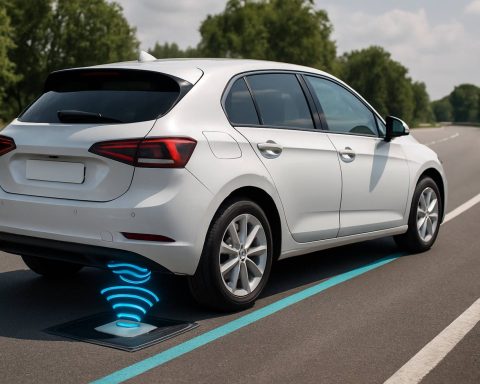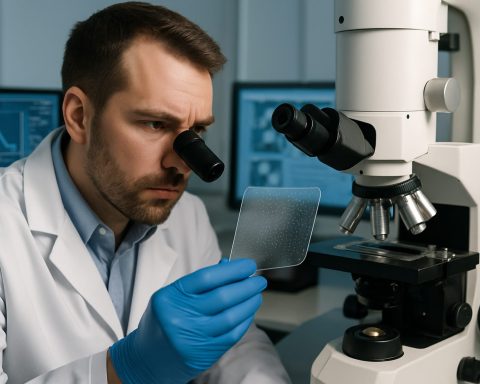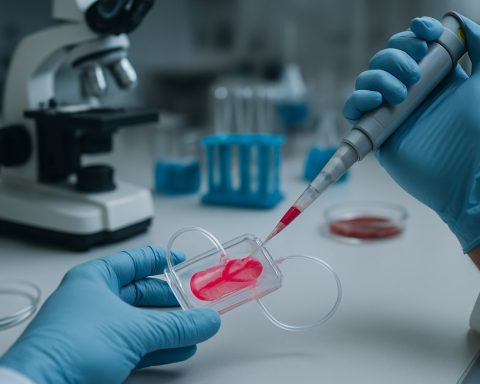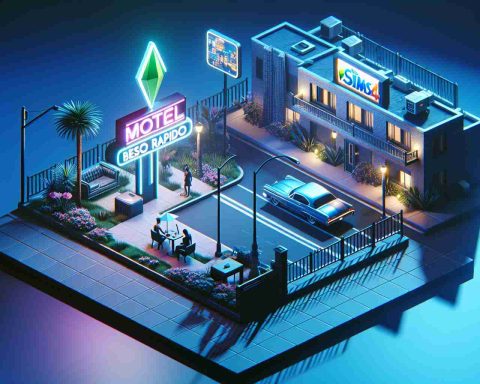- Cold temperatures significantly affect electric vehicle (EV) performance by draining battery life and prolonging charging times.
- The University of Michigan has developed a 20-nanometer lithium borate-carbonate coating to enhance EV battery performance in cold weather.
- This innovative coating prevents lithium plating, which slows down charging and reduces battery lifespan.
- The new technology allows EVs to fully charge in under ten minutes, even in frigid conditions.
- Battery capacity remains nearly intact after 100 cycles of fast charging, enhancing long-term performance.
- The coating requires minimal changes to existing battery production, facilitating its quick adoption by manufacturers.
- This advancement marks a potential turning point for EV utility and reliability in winter climates, offering a path for broader cold-weather use.
When winter tightens its icy grip, electric vehicles often find themselves in a frigid dilemma. The cold has a notorious knack for draining battery life, delaying charging times, and stalling performance—none of which make for a smooth, or reassuring, ride. But now, in the snowy heartland of the University of Michigan, engineers unveil a groundbreaking solution that could melt these problems away.
Imagine your EV battery clad in a sophisticated parka, one that ditches lithium-ion malaise for a cozy, efficient ride even in bone-chilling temperatures. The UM team has pioneered a cutting-edge coating technology that promises to redefine how electric vehicles brave the cold. This 20-nanometer-thick layer of lithium borate-carbonate acts as both shield and enhancer, preventing the pesky lithium plating that slows recharge and weakens battery lifespan.
Typically, an EV driver might grow old watching their battery recharge, especially in sub-freezing conditions where even aggressive fast chargers can take over an hour. But with this novel technology, a jolt to a full charge now speeds along in less than ten minutes—quicker than grabbing a coffee and donut at your local fill-up joint. Not only does it fast-track your journey, but this innovation maintains almost full battery capacity even after 100 cycles of fast charges, effectively rewriting the expectations of winter EV viability.
Moreover, the technology won’t demand complex retooling in current battery production lines. Limited adjustments can pave the way for widescale adoption, making this a feasible game-changer for manufacturers worldwide. It’s a harmonious convergence of cutting-edge science and practical application, demonstrating a tangible path forward in EV technology.
Since the debut of the mass-market Nissan Leaf over a decade ago, incremental advancements have no doubt smoothed the road for electric vehicles, yet frost and efficiency still clash in the colder months. The innovative coating from Michigan could signal a turning point that keeps the energy-density holy grail intact while ensuring drivers never miss a beat.
This leap forward not only warms EV prospects but also sparks a glimmer of hope for broader cold-weather adoption. As the technology races towards commercialization, drivers may soon leave winter woes in the rearview mirror and embrace a truly electrified, year-round journey. Winter in the world of EVs may never be the same again.
How the University of Michigan’s Battery Coating Revolutionizes EV Winter Performance
Introduction
Electric Vehicles (EVs) have transformed the modern landscape of transportation, heralding a cleaner, more sustainable future. However, cold climates have historically posed significant challenges for EV owners, primarily due to decreased battery performance and longer charging times. Fortunately, groundbreaking research from the University of Michigan offers a promising solution.
How the Innovative Coating Works
The University of Michigan’s team has developed a 20-nanometer-thick coating of lithium borate-carbonate, targeted at enhancing EV battery performance in cold weather. This innovation acts as a dual-function material—both a protective shield and an enhancer of battery capability. Here’s how it works:
– Preventing Lithium Plating: The coating minimizes lithium plating, a common issue in cold climates that slows recharge rates and reduces battery lifespan. By preventing this, the coating ensures faster, more reliable charging.
– Enhanced Efficiency: By facilitating more efficient chemical reactions within the battery, the coating markedly improves performance, allowing for up to 10-minute recharges even in sub-zero temperatures.
Real-World Applications and Benefits
Faster Charging Times
– Traditional fast chargers can take over an hour in cold conditions. With the new technology, this can be reduced to less than ten minutes.
Extended Battery Life
– Maintains near-full capacity even after 100 cycles of fast charging, considerably extending the life of the battery and enhancing the sustainability of EVs.
Ease of Adoption
– Minimal adjustments are needed in existing manufacturing processes, making widespread adoption more feasible. This bike path towards implementation can hasten the pace at which this technology is adopted by automakers globally.
Market Forecasts & Industry Trends
The global push towards electrification, coupled with this breakthrough, forecasts a significant uptick in EV adoption in colder regions:
– EV Market Growth: According to IEA, global EV stock is expected to reach 200 million by 2030, and innovations like this will only accelerate the influx in colder markets.
– Manufacturing Evolution: Manufacturers focusing on cold-market-ready EVs could capitalize on this innovative technology to gain a competitive edge.
Pros & Cons Overview
Pros
– Rapid charging even in cold weather.
– Extends battery lifespan.
– Efficiently maintains energy capacity over time.
– Easy integration with existing manufacturing technologies.
Cons
– The cost of adding the new coating still needs full market analysis.
– During early stages, consumer and industry adaptation may vary.
Addressing Common Concerns
How do cold temperatures affect EVs?
Cold weather reduces battery efficiency, increases energy consumption for heating, and can extend charging time.
Will the coating add cost to the vehicle?
While cost analyses are ongoing, the adjustment cost seems minimal due to the ease of integration with existing battery production lines.
Is the technology ready for commercial use?
The technology is swiftly moving towards commercialization, with ongoing tests to ensure efficiency and performance across various conditions.
Actionable Recommendations
– EV Owners: Prepare for a future where cold-weather performance is no longer a barrier. Stay informed about automakers integrating this technology.
– Automakers: Consider adopting and integrating this coating into future production models to ensure efficient cold-weather performance.
Conclusion
The University of Michigan’s coating technology represents a significant leap forward for EVs, particularly for owners in cold climates. This innovation could transform winter driving, making EVs a more viable option year-round. As the technology nears commercialization, the cold-weather driving experience may be set for a revolutionary change.
For more information on EV innovations and trends, visit University of Michigan.












